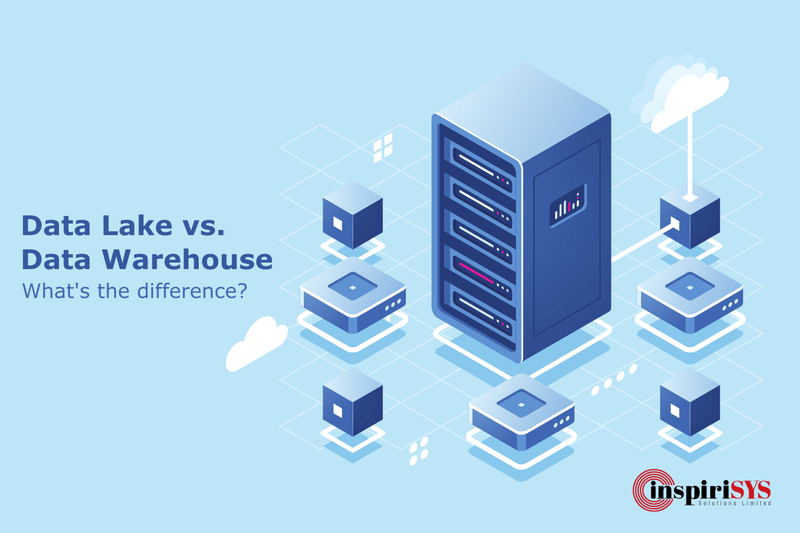Big data has made a great impact on several industries. The big data market is expected to reach 123.23 billion USD by 2025. It has the potential to bring social and economic benefits to businesses. The rapid increase in the use of IoT devices has enabled the collection of a massive amount of data every single day. Nowadays, the success of an organization greatly depends on data-driven business decisions. Data Lake and Data Warehouse are the most debated terms in the business data spectrum. Many are sceptical about the difference between Data Lake and Data Warehouse. Some debate that both are the same. But in reality, they are truly meant for different purposes.
Data Warehouse
Data Warehouse is the central repositories of integrated data from one or more disparate sources. Since, it stores real-time and historical data, it is an essential component of data analytics. It is the core of the Business Intelligence (BI) system. Data Warehouse system is also known by the following name:
- Decision Support System (DSS)
- Executive Information System
- Management Information System
- Business Intelligence Solution
- Analytic Application
- Data Warehouse
Data in the Data Warehouse may be:
- Structured
- Semi-Structured
- Unstructured Data
This data is processed in the Data Warehouse through Business Intelligence tools, SQL Clients, and Spreadsheets. It merges information coming from different sources into one all-inclusive database.
Data Warehouse is needed for the below users:
- Smart Decision Makers
- Information analysts
- Growth hackers who use a huge volume of data
- Data mining experts
Data Lake
James Dixon, then-CTO at Pentaho, coined the term “Data Lake” to contrast it with data mart. Data Mart is a smaller repository of interesting attributes derived from raw data. There is no hierarchy or organization among the individual pieces of data. A Data Lake stores relational data from line of business applications, and non-relational data from mobile apps, IoT devices, and Social Media. When data is captured, the structure of the data or schema is not defined. Each data element in a lake is assigned a unique identifier and tagged with a set of extended Metadata tags.
Companies typically segment out several data lakes depending on privacy, production access, as well as the teams that will be leveraging the incoming information. It allows users to access and explore data in their own way, without needing to move the data into another system. Insights and reporting obtained from a data lake typically occur on an ad hoc basis, instead of regularly pulling an analytics report from another platform or type of data repository. It needs to have governance and requires continual maintenance to make the data usable and accessible.
Data Lake vs. Data Warehouse
| Data Lake | Data Warehouse |
| Data storage purpose is undefined | Data storage purpose is pre-defined |
| Used by data scientists | Used by business professionals |
| Raw data is used | Processed data is used |
| Emerging Technology | Strong maturity model |
| Highly accessible and easy to update | Complicated and costly to make changes |
| Can contain all data and data types | Only pre-defined data types are used |
| Quick processing time | Needs more time to process |
| Schema is defined after data is stored | Schema is defined before data is stored |
Data lakes and data warehouses are not the same and serve different purposes. Both of them are data storage repositories, but this is where the similarities end. The main difference between a data lake and a data warehouse is, the former stores unstructured and raw data without a currently defined purpose and the later provides a structured data model designed for reporting. They also typically use different hardware and technologies for storage.
Data warehouses can be expensive, while data lakes can remain inexpensive despite their large size because they often use commodity hardware. Structural convenience helps data warehouses to be used by business analysts and other business users who know what data they need in advance for regular reporting. A data lake is often used by data scientists and analysts because they are performing research using the data, and the data needs more advanced filters and analysis applied to it before it can be useful.
Inspirisys Data Center Solutions
We take a holistic view across servers, storage, and networks, enabling us to provide an optimized data center that efficiently shares and dynamically aligns resources to meet the ever-changing application demands. Inspirisys has proven expertise and experience with large deployment base in the following data solution stack:
- Backup and Recovery Solutions
- Archival Solutions
- Storage Management Solutions







